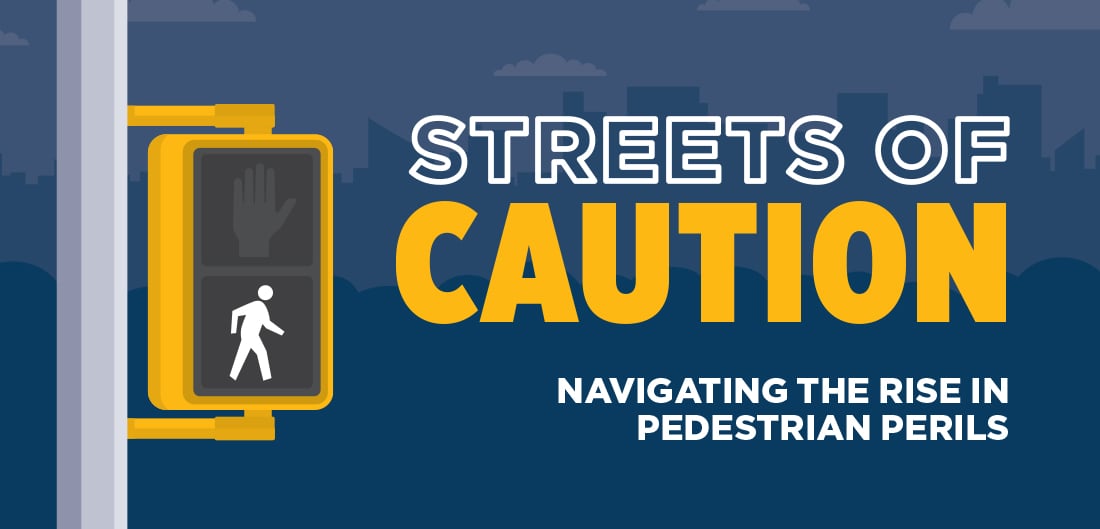For nearly 30 years, annual pedestrian traffic fatalities in the United States were on the decline. In fact, from the peak in 1980 until 2009, yearly pedestrian traffic deaths declined by nearly 47%. Since then, this trend has completely reversed course. Pedestrian traffic deaths rose each year and exceeded the 1980 peak in 2022.
On the surface, the addition of so many potential distractions to our lives might seem like a logical explanation. Texting on smartphones while driving, crossing the street without looking up, and the near-constant use of wireless, noise-canceling ear buds sound like a recipe for disaster, but what does the data say?
A Uniquely American Problem
While smartphones and other devices are easy targets of blame for both drivers and pedestrians, this rise in pedestrian deaths over the last few years is proving to be a uniquely American problem. At a time when every country has smartphones and other similar distractions, pedestrian traffic deaths in comparably developed countries are reaching their lowest levels in decades.
The United States is the exception. Here’s why.
Large Vehicles
According to the Bureau of Transportation Statistics, the proportion of light vehicles (under 10,000 pounds) sold that are trucks and SUVs has increased significantly. In 2010, 51% of vehicle purchases were trucks and SUVs. In 2021, that percentage rose to 78%.
Larger vehicles are 45% more likely to cause pedestrian deaths compared to smaller passenger vehicles, according to 2023 research from the Insurance Institute for Highway Safety. In addition to their added size and weight, these types of vehicles also sit up higher with a blunter front end. This can impede visibility and impact pedestrians toward the torso and head areas, which can lead to more significant injuries, the IIHS found.
Poor Infrastructure
While most of Europe has prioritized pedestrian safety for both walkers and cyclists, the United States has not. And a significant portion—76%, according to the Federal Highway Administration—of traffic-related pedestrian deaths occur at night. Things like inadequate sidewalks, crosswalks and lighting all contribute to decreased safety.
Speeding and Reckless Driving
It isn’t just pedestrians dying on American roadways at an alarming rate. According to the National Highway Traffic Safety Administration (NHTSA), car crash deaths hit a 15-year high in 2021. A dangerous trend of speeding and reckless driving is to blame.
These drastic changes in driving behavior are present in nearly every state and are the result of multiple factors including increased stress, impaired driving, distracted driving, reduced law enforcement presence, aggressive driving and road rage.
What Can Be Done?
All of these factors have contributed to creating a more dangerous environment for pedestrians for a long time.
But, since October is Pedestrian Safety Month, now’s the time to consider what we can do about it.
Remain Vigilant Behind the Wheel
Drivers should be encouraged to remain attentive and defensive, and to look out for pedestrians at all times.
Stay Alert on Your Feet
Pedestrians should pay close attention to their surroundings, stay alert and keep to designated pedestrian areas, like crosswalks, whenever possible. Wear light-colored or reflective clothing in the dark, avoid distractions like noise-canceling headphones and don’t stare at devices while crossing the street.
It’s the Law
It might seem obvious, but many accidents occur because of reckless driving and ignoring rules. Never drive under the influence, always yield to pedestrians in crosswalks, and always follow the speed limit, especially in school zones or neighborhoods where children are.
Tech Solutions
Technological advancements in driving safety, like collision detection systems, automatic braking and backup cameras, can be helpful tools if used properly.
Stay Informed
Advocate for safer streets, and encourage your local organizations, elected officials, law enforcement agencies and urban planners to prioritize pedestrian safety in your community.
